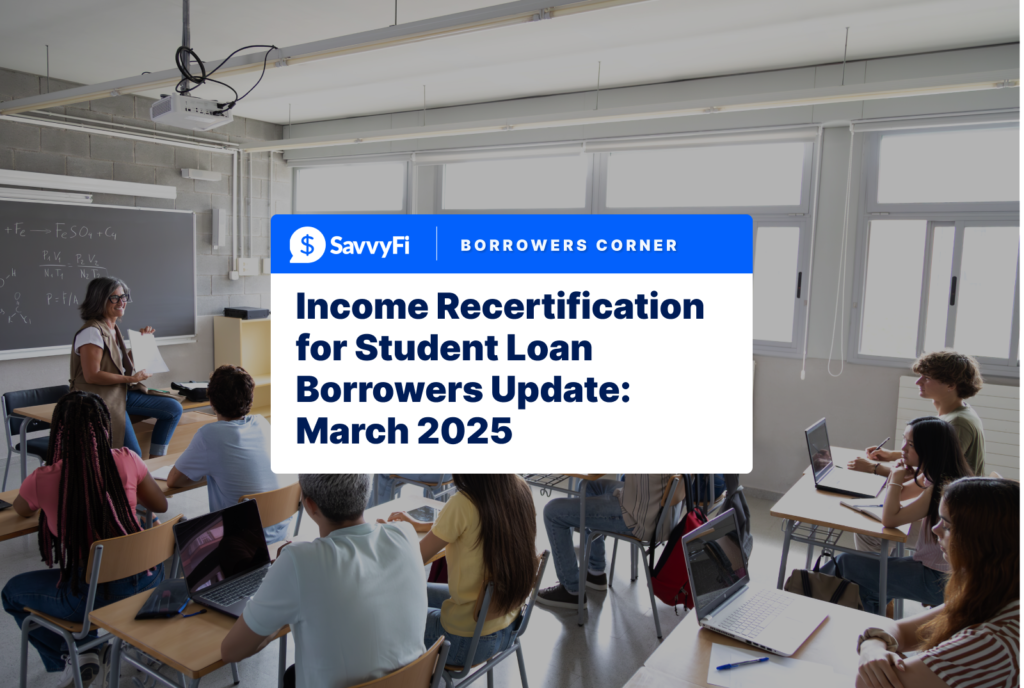More than ever, the ability to attract and retain top talent is critical to the success of businesses of all sizes, making it vitally important that organizations offer competitive benefits.
Across the board, inflation has parents feeling the sting of rising education costs, and savvy employers are taking notice. They recognize that education-based benefits — such as employer 529 contributions — are now becoming a common factor in attracting and retaining top talent.
So with that in mind, we’ll be taking a closer look at 529 plans as an employee benefit, along with examining the impact one company saw from implementing a 529 employer contribution program. We’ll also discuss legislative updates, challenges with state plans, and why low adoption rates could mean an opportunity for forward-thinking employers and HR teams.
Why Offer Employer 529 Contribution Plans?
Employer 529 contribution plans are benefits programs in which an employer contributes to 529 savings plans on behalf of its employees.
For employees, this is an opportunity to put aside extra money for future educational expenses, whether for themselves or their beneficiaries.
And because 529 employer contributions are made with after-tax dollars, they are allowed to grow completely tax-free — much like funds in a Roth IRA. (As we’ll discuss later on, a portion of unused 529 savings can even be rolled into a Roth IRA.)
There are also considerable benefits for employers.
As ZipRecruiter chief economist Julia Pollak recently noted, despite signs the job market is cooling, workers still have considerable leverage — along with ample opportunities for better-paying, more secure jobs.
529 contribution benefits are one way for employers to stand out.
While relatively few employers offer these contributions to date, those employers that do offer 529 plans have seen increases in employee engagement, retention, and overall well-being. All because they showed a commitment to supporting the educational aspirations of their employees and their families.
Demand for 529s continues to grow given the expanded uses and rampant education cost inflation. In their 2022 State of Education Savings report, Edward Jones found that only about 40% of employees know what 529 plans are; however, that number is growing.
Read more: What Is a 529 Plan?
What Educational Expenses Can 529 Plans Cover?
529 plans can support individuals at any stage of their educational journey, with qualified expenses including:
- Two- or four-year colleges
- K-12 tuition
- Trade schools
- Apprenticeships
Soon, you’ll even be able to put 529 funds toward retirement, thanks to the recently enacted SECURE 2.0 Act. Starting in 2024, funds in these plans can be rolled into a Roth IRA up to a lifetime limit of $35,000.
This expansion extends the benefits of employer contributions to individuals without immediate education needs.
In fact, anyone can open an account for themself or on behalf of a child or other beneficiary, meaning almost anyone in the workplace can benefit from a 529 employer contribution.
What Are the Tax Implications of a 529 Plan?
Since 529 employer contributions are made with after-tax dollars, there are no penalties for withdrawing those contributions. However, it’s important to note that there may be penalties on the earnings if withdrawn for non-qualified expenses.
Even in the worst-case scenario, where the funds are not used for educational purposes, individuals can still withdraw the contributions made by their employer without penalties. (They would be subject to taxes on any gains withdrawn for non-educational purposes, though.)
Challenges with Using State 529 Plans Directly
So, with all that 529s can be used for — and benefits for employers and employees — why aren’t more people and companies taking advantage of them?
Directly utilizing state 529 plans in the workplace poses significant challenges for employees and HR departments due to the complex nature of the process.
For their part, employees are typically required to:
- Individually select a state’s 529 plan of their choice
- Navigate the enrollment process
- Locate, complete, and submit to HR the appropriate payroll deduction form
From there, HR personnel have the added responsibility of manually uploading the report into the payroll system.
All too often, this cumbersome administrative procedure becomes a deterrent, leading to low utilization rates. Fortunately, SavvyFi is working to simplify this process for employers.
Seizing the Opportunity: Differentiating Your Workplace with Employer Contributions to 529s
Despite the obvious benefit to businesses and employers alike, only around 2% of employers offered 529 contributions as of 2020, according to the Society for Human Resources Management.
However, we’ve observed greater participation in employer 529 programs than in employer contributions to student loans. This indicates a strong desire for this type of benefit among employees.
By offering employer contributions to 529 plans, your workplace has the opportunity to distinguish itself while providing a highly sought-after benefit that demonstrates your commitment to employee development and financial wellness.
Here, we’ll look at a case study that vividly demonstrates the significant impact of the employer contribution program on employee engagement, satisfaction, and long-term financial planning.
Case Study: A Resounding Success with 30% Employer Participation
When one employer reached out to us about piloting a 529 employer contribution plan, they weren’t sure what to expect.
So you can imagine their surprise when this pilot program saw a participation rate of over 30%, surpassing all expectations and becoming the most successful new benefit introduced by the organization that year.
But what truly astonished the company was the diverse range of participants who signed up despite an increase in their taxable income.
Parents, grandparents, aunts, uncles, and even individuals planning for their own future education enrolled. Many employees enrolled without a specific education goal in mind, opting instead to use the funds for future educational needs or to keep their options open.
Lessons Learned and Best Practices
From this case study, we can identify several factors that led to the remarkable success of the employer contribution program.
One of the standout aspects of the implementation was how SavvyFi approached the rollout using innovative technology.
By streamlining the 529 account origination process, employees weren’t burdened with the task of bringing in their own 529 plans. Instead, all HR had to do was send a simple signup link to their employees, who then provided a small amount of information about themselves.
This process enabled employees to begin receiving employer contributions seamlessly, making participation hassle-free.
Furthermore, effective communication and comprehensive education on the benefits of the program played a vital role in encouraging employee engagement. Clear and concise communication materials, along with thorough explanations of the advantages of the employer contribution program, helped employees understand the value and take full advantage of the opportunity.
By leveraging APIs and other technology to streamline the signup process, HR departments can make it easy and convenient for employees to self-service, saving valuable time and resources.
Employer Contributions to 529 Plans: Enhancing Education Savings
There are various ways in which employers can contribute to employer 529 plans, depending on their preferences and the structure of their benefit programs.
Here are some common approaches:
Setting Annual Contribution Limits
When it comes to employer 529 contribution plans, there are generally no strict limits imposed by the IRS or other regulatory bodies. Instead, the account balance limits of the specific 529 plan come into play.
These limits are typically set at several hundred thousand dollars or more, allowing employers to make substantial contributions if they wish to do so. This flexibility means that employers have considerable discretion to offer their employees fixed contribution amounts.
Matching Programs
Another way for employers to incentivize their employees to contribute to 529 plans is through matching programs. Similar to retirement savings plans, an employer can choose to match a percentage of the employee’s contributions.
For instance, if an employer implements a 50% matching program, they would contribute 50 cents for every dollar the employee contributes to their 529 plan, up to a certain limit.
Offerings like these give employers wider choices when it comes to variable comp, enabling employees to pick the type of variable comp that is most impactful to them.
Flat Monthly Contributions
Alternatively, employers may opt to provide a flat monthly contribution to their employees’ 529 plans. This approach simplifies the process for both employers and employees by providing a consistent and predictable contribution amount. A flat monthly contribution can help employees plan their savings and budget accordingly, knowing that they will receive a regular employer contribution to their 529 plans.
This approach is particularly useful for employers who want to ensure consistent support for their employees’ education savings without the need for complex calculations or adjustments based on employee contributions. It provides stability and demonstrates ongoing commitment to employee education.
Regardless of the approach, it should be noted that employer contributions to 529 plans are considered taxable income. Before offering this benefit to your employees, it is important to be sure that they are aware of this to avoid unwelcome surprises come tax time.
529 Contribution Plans: A Valuable Benefit for Employees and Employers
The versatility of 529 plans, particularly in light of recent legislative updates—along with the potential to impact individuals beyond immediate education needs—make employer contributions a highly valuable benefit for employees of all ages.
While challenges still exist, employer contribution programs can be a differentiator for your organization, offering employees meaningful benefits that:
- Support their long-term financial goals and personal growth.
- Address challenges they face, like saving for a child’s education.
- Can provide additional income where salary budgets are constrained.
Contact us today to learn more about how you can differentiate your workplace and attract top talent by offering valuable employee educational savings benefits like these.
About SavvyFi: SavvyFi is a user-friendly fintech platform that makes it easy for employers to provide college savings and student loan benefits to their employees. Because the company’s platform is “zero-touch” to HR — without any complicated systems, integrations, or paperwork — SavvyFi unlocks education financing capabilities to even the smallest employers that would not otherwise be able to offer these benefits.
Disclosure: Third-party quotes shown may not be representative of the experience of all SavvyFi customers and do not represent a guarantee of future performance or success.





